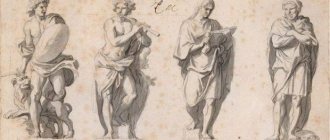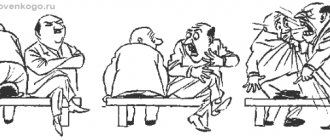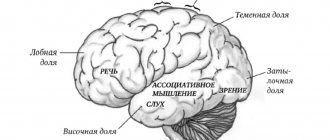Properties and structure of personality
Photo by saeed karimi on Unsplash
“Personality properties” in psychology are constant mental processes that influence human activity and characterize it from both the psychological and social sides.
The basis of the psychological structure and content of a personality is its mental properties, such as:
- Focus
- Character
- Temperament
- Capabilities
By “structure” we mean the connection and interaction of different components.
It is divided into four personality levels:
- the lower one is physiological (sexual) mental properties;
- the second represents individual characteristics, such as: thinking, memory, sensations, ability and perception. They are formed under the influence of congenital factors and their development;
- the third consists of individual experience. His “set” includes: acquired knowledge, skills and habits. The designated level is determined by its social nature and formed in the process of life;
- the highest is the level of focus. It includes: interests, desires, views, beliefs, self-esteem, worldview, character traits. This level is the most socially conditioned. Its formation is influenced by upbringing. Moreover, it reflects the ideology of the society in which the individual is located.
You will probably ask why it is important for you to distinguish between these levels? Everything is very simple - so that you can give an objective description of both yourself and other people. Understanding yourself and others implies the absence of contradictions, and in some cases, conflicts.
Definition
The term “personality” itself originated in ancient times. Then theaters were widespread everywhere, in which each actor for his role had his own mask, reflecting his essence. It was called by the Latin word persono, “to speak through an opening.” Thus, a persona is a certain type of person, a character with his own characteristics and actions.
Later in Ancient Rome, the term persona was used more widely and meant a person answerable to the law. By the way, slaves were not “persons” and were not considered a person.
From the point of view of different approaches and studies, completely different definitions of personality and its properties are given. For example, a biological or medical approach implies that personality is genetic prerequisites, phylogenetic and ontogenetic characteristics in combination with experiences acquired throughout life and behavioral characteristics.
The social approach considers personality as a product of the influence of culture, social environment, a certain social role and their influence on development. Both psychometric and experimental studies speak about personality only after studying its various properties, reflecting its structure, measuring various indicators and observations.
Focus
Perhaps one of the main psychological properties of a person is direction. It includes such important components as:
- Needs
- Motives
- Goals
In fact, direction is nothing more than their unity, which determines the nature of the individual’s activity.
In turn, needs represent the need of a person - if we consider it from the point of view of a socio-biological being in a formed material or spiritual object.
As you know, needs require satisfaction. This is what motivates a person to the necessary activity, which implies a certain activity.
Capabilities
When we are trying to understand why people who are in the same type of life conditions will have different results, to analyze this issue, we will be guided by such a concept as “abilities”, taking as a basis the fact that it is the abilities that will determine what will ultimately be achieved Human.
Mental properties: temperament
As an example, abilities provide an explanation for why some people learn faster than others.
Abilities can be divided into:
- unification of mental processes and states;
- an explanation of how skills, knowledge, skills are acquired, used, and consolidated.
A person has a wide variety of abilities in his arsenal. All of them are divided into several categories.
- Elementary and complex, where:
elementary are associated with the senses and primitive movements. This refers to the ability to distinguish colors, sounds, and smells. They are present from birth.
But not everyone has special abilities, since they require the presence of accompanying inclinations. For example, artistic, visual, musical, acting, etc.
- Theoretical and practical, where:
By theoretical we mean a person’s predisposition to abstract logical thinking. This also includes the ability to set and carry out theoretical tasks.
Regarding practical ones, you probably already guessed it yourself: setting and performing practical tasks that are directly related to specific actions within a certain situation in life.
- Educational and creative, where:
educational ones determine the success of learning, and creative ones suggest how much an individual can create spiritual and material objects of culture. And what is important, he is able to “give out” new ideas, discoveries, etc.
- Communicative and subject-activity, where:
The first, as you yourself understand, means knowledge, skills and abilities that are directly related to interaction with other people and interpersonal communication.
The second refers to the interaction of a person with inanimate objects.
Afterword
Despite the fact that most scientists are of the opinion that individuals are made and not born, the question of whether all people are individuals continues to attract controversy and controversial opinions.
- The question of whether a child can be considered a person is controversial, although humanistic pedagogy argues that, undoubtedly, it can and should be.
- The understanding of a mentally ill person or a criminal as an individual is just as controversial.
- Don’t the phrases “asocial personality” or “degraded personality” look ridiculous?
In the end, everyone chooses for themselves which side they belong to in these issues. In my opinion, each person (especially important for young children when raising) can be treated as a potential personality, that is, given a few points head start. However, this is possible until a person proves otherwise.
Temperament
Continuing our consideration of the psychological properties of personality, we gradually approached temperament. Temperament conveys the dynamic characteristics of human behavior and activity. According to Pavlov, temperament is nothing more than an innate characteristic of the nervous system. In other words, genotype.
There are four types:
- Cholerics
In short, it is characteristic of those who are hot-tempered, unrestrained, impatient and impulsive. But at the same time, if they are met halfway, they can quickly “stabilize” their condition. They are characterized by persistence and stability in their interests and aspirations.
- Sanguines
It is typical for optimists and jokers. Sanguine people are sociable, which allows them to quickly build bridges of communication with other people. They can work a lot and for a long time. They take on new things easily.
- Phlegmatic people
It is quite difficult for them to rebuild in a new way and adapt to a new environment. They find it difficult to break old habits. They are slowly excitable, but at the same time they need a lot of time to “cool down”. With everything, phlegmatic people are quite energetic and efficient. They are characterized by endurance and self-control.
- Melancholic people
These are gloomy people with permanent internal tension. Their distinctive features: vulnerability, anxiety, restraint. Even minor difficulties can pull the rug out from under their feet, and they immediately give up.
Character
From ancient Greek, the word “character” literally sounds like “sign”, “trait”, “distinctive object”.
Giphy
Character - refers to the mental properties of a person, as an identifier of an individual’s behavior model, and is manifested in his attitude towards society, himself, other people and work. Character is a set of relatively constant personality traits and qualities, such as intellectual, volitional and emotional. Which, in turn, give rise to individual and social behavior of the individual, and interaction with others.
Knowledge of character helps to consciously perceive those traits of an individual that are manifested in his actions from the point of view of logical and internal consistency.
Character is closely related to temperament. Each of us is “filled” with a unique set of characteristics. That is why each of us is unique and inimitable in our own way.
Emotions
Emotions are a mental reaction to any events. An emotional reaction is always subjective and has nothing to do with objective facts. Emotions are associated with the individual needs of the individual, as well as beliefs and experiences.
By type, emotions can be positive or negative. The first includes joy, passion, enthusiasm, faith, optimism, hope, satisfaction. The second - boredom, irritation, disappointment, anxiety, despondency, fear, sadness, excitement.
Psychologist B.I. Dodonov proposed the following classification of emotions according to the specifics of the situations in which they arise:
- communicative;
- altruistic;
- practical (occurs after the successful implementation of the plan);
- gloric (associated with the need for self-affirmation);
- fearful (occurs in situations of risk, danger);
- romantic;
- aesthetic;
- Gnostic (associated with the desire for knowledge);
- active (associated with accumulation, gathering);
- hedonistic (associated with any pleasures).
Emotions are situational experiences. They are short-lived. If you continue to experience the same thing after the situation ends, then this is the feeling. However, in practice, the first and second are often identified.
Psychological characteristics of personality
Features mean aspects: psychological, behavioral, physiological. Based on this, the structure of psychological states consists of diverse components.
For example:
- the emotional sphere manifests itself either in positive or negative experiences;
- the cognitive sphere establishes a certain degree of logical thinking, the ability to be responsible for regulating the state, and giving an accurate forecast of upcoming events;
- the behavioral level determines the correctness and accuracy of the actions performed, as well as their compliance with the needs that are relevant;
- the physiological level is responsible for blood pressure, pulse rate, etc.;
- The communicative level implies a certain state of mind that affects communication with others: the ability to hear a counterpart, influence him, and also set current goals and achieve them.











